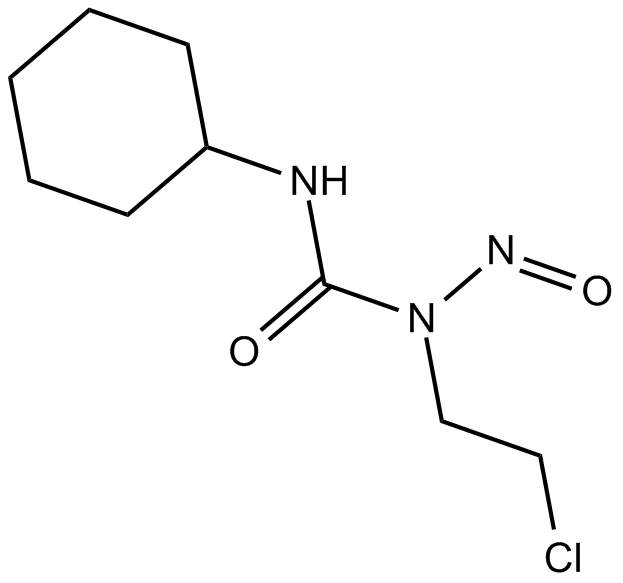Lomustine (Synonyms: CCNU, NCI C04740, NSC 79037) |
| Catalog No.GC17865 |
Antineoplastic drug
Products are for research use only. Not for human use. We do not sell to patients.

Cas No.: 13010-47-4
Sample solution is provided at 25 µL, 10mM.
Lomustine is an antineoplastic drug used in chemotherapy [1]
Lomustine has been revealed to inhibit the growth of tumour cell lines with IC50 values of 25μM, 8.8μM and 13μM for breast ZR-75-1, astrocytoma U87MG and colorectal LS174T cell lines [2]. Besides, Lomustine has been found to be particularly effective in the treatment of certain neoplasms of the central nervous system, because of the high lipid solubility and permeability through the blood brain barrier. In addition, Lomustine has shown the effect function in treatment of meningeal leukemia in the mouse and in children who have acute leukemia with central nervous system involvement [1].
References:
[1] Cheng CJ, Fujimura S, Grunberger D, Weinstein IB. nteraction of 1-(2-chloroethyl)-3-cyclohexyl-1-nitrosourea (NSC 79037) with nucleic acids and proteins in vivo and in vitro. Cancer Res. 1972 Jan;32(1):22-7.
[2] Baer JC1, Freeman AA, Newlands ES, Watson AJ, Rafferty JA, Margison GP. Depletion of O6-alkylguanine-DNA alkyltransferase correlates with potentiation of temozolomide and CCNU toxicity in human tumour cells.Br J Cancer. 1993 Jun; 67(6):1299-302.
Average Rating: 5 (Based on Reviews and 10 reference(s) in Google Scholar.)
GLPBIO products are for RESEARCH USE ONLY. Please make sure your review or question is research based.
Required fields are marked with *




















